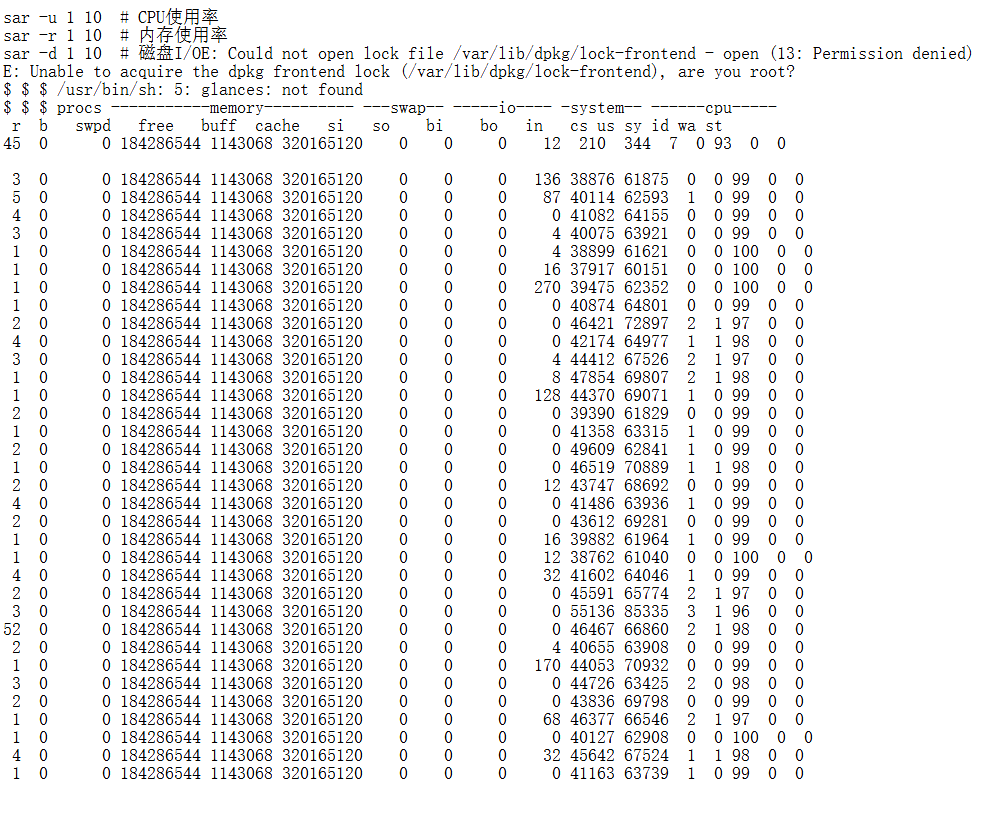弹性部署服务推理性能调优
在弹性部署服务中,推理性能的优化是确保系统高效运行和用户体验的关键。尤其在深度学习服务中,如何确保硬件资源的高效利用,如何排查瓶颈,并选择最佳的配置,成为了优化过程中的重点。本文将详细介绍一系列的调优建议,帮助用户从硬件、软件、部署环境等多个层面提升推理性能。
1. 检查 GPU 是否实际被使用
Section titled “1. 检查 GPU 是否实际被使用”在深度学习推理任务中,GPU 的利用率至关重要。首先需要确认硬件是否被正确识别,并且能够支持 GPU 加速。
1.1 验证 GPU 可用性
Section titled “1.1 验证 GPU 可用性”要确认 GPU 硬件的可用性,可以通过以下命令检查:
nvidia-smilspci | grep -i nvidia
nvidia-smi --query-gpu=driver_version --format=csvnvidia-smi 命令会列出当前 GPU 的详细信息,如内存、驱动版本、GPU 利用率等。lspci 命令帮助确认 NVIDIA 硬件是否被系统识别。
1.2 在代码中验证 GPU 使用
Section titled “1.2 在代码中验证 GPU 使用”通过深度学习框架(如 PyTorch 和 TensorFlow)验证代码是否正确使用 GPU:
import torchimport tensorflow as tf
print(f"PyTorch 版本:{torch.__version__}")print(f"CUDA 可用:{torch.cuda.is_available()}")print(f"GPU 数量:{torch.cuda.device_count()}")if torch.cuda.is_available(): print(f"当前 GPU: {torch.cuda.get_device_name(0)}") print(f"GPU 内存:{torch.cuda.get_device_properties(0).total_memory / 1024**3:.2f} GB")
print(f"TensorFlow 版本:{tf.__version__}")print(f"GPU 设备列表:{tf.config.list_physical_devices('GPU')}")上述代码会检查是否有 GPU 可用,并显示 GPU 的型号和内存。
1.3 运行时 GPU 使用监控
Section titled “1.3 运行时 GPU 使用监控”要实时监控 GPU 的使用情况,可以使用以下工具:
nvidia-smi -l 1
nvidia-smi pmon -i 0
pip install gpustatgpustat -i 1nvidia-smi -l 1 命令会以 1 秒的间隔持续显示 GPU 的实时状态,而 gpustat 提供了更易于理解的 GPU 状态输出。
2. 尝试更换高性能 GPU,确认性能瓶颈是否与 GPU 硬件相关
Section titled “2. 尝试更换高性能 GPU,确认性能瓶颈是否与 GPU 硬件相关”在进行推理优化时,如果 GPU 利用率低或性能不理想,可能是硬件的性能瓶颈。为了验证这一点,可以通过以下基准测试来评估不同 GPU 的性能。
2.1 GPU 性能对比测试
Section titled “2.1 GPU 性能对比测试”使用矩阵乘法来测试 GPU 的计算性能:
import torchimport timeimport numpy as np
def gpu_benchmark(): device = torch.device("cuda" if torch.cuda.is_available() else "cpu")
# 测试矩阵乘法性能 sizes = [1000, 2000, 4000, 8000] for size in sizes: a = torch.randn(size, size).to(device) b = torch.randn(size, size).to(device)
# 预热 for _ in range(10): torch.matmul(a, b)
# 性能测试 start_time = time.time() for _ in range(100): torch.matmul(a, b) torch.cuda.synchronize() end_time = time.time()
print(f"矩阵大小 {size}x{size}: {(end_time - start_time) * 1000:.2f}ms")
gpu_benchmark()通过测试不同矩阵大小的乘法,可以大致了解 GPU 的计算能力,并帮助确认是否需要更换更高性能的 GPU。
3. 尝试根据显卡驱动版本更换 CUDA、cuDNN 和 PyTorch 等版本
Section titled “3. 尝试根据显卡驱动版本更换 CUDA、cuDNN 和 PyTorch 等版本”不同的 GPU 驱动版本和框架版本可能会对性能产生较大影响。为了确保系统能够充分利用硬件资源,需要保证 CUDA、cuDNN 与 PyTorch 版本的兼容性。
3.1 版本兼容性检查
Section titled “3.1 版本兼容性检查”使用以下命令检查当前驱动和框架版本:
nvidia-sminvcc --versionpython -c "import torch; print(torch.__version__); print(torch.version.cuda)"
python -c "import torch; print(torch.backends.cudnn.version())"官方的版本兼容性矩阵可以帮助我们确定各个版本的兼容性,避免不兼容导致的性能问题。
- PyTorch 版本兼容性
- CUDA 兼容性文档
- CUDA Toolkit 12.9 Update 1 - Release Notes — Release Notes 12.9 documentation
- Supported Products — NVIDIA cuDNN Frontend
4. 尝试更换基础镜像,手动部署
Section titled “4. 尝试更换基础镜像,手动部署”容器化部署可以极大简化环境管理和服务的扩展性。根据不同的需求,选择合适的基础镜像非常重要。不同的镜像会影响运行时的性能,以下是几种常见的选择策略。
4.1 基础镜像选择策略
Section titled “4.1 基础镜像选择策略”4.1.1 官方 PyTorch 镜像
Section titled “4.1.1 官方 PyTorch 镜像”FROM pytorch/pytorch:2.7.0-cuda12.6-cudnn9-devel这个镜像包含了官方提供的 PyTorch 框架,并预装了 CUDA 和 cuDNN 加速库,适合大多数深度学习应用。
4.1.2 NVIDIA 官方 CUDA 镜像
Section titled “4.1.2 NVIDIA 官方 CUDA 镜像”FROM nvidia/cuda:12.6.3-cudnn-devel-ubuntu22.04此镜像提供了 NVIDIA 官方优化的 CUDA 运行时环境,更适合需要高度自定义配置的用户。
4.1.3 轻量级 Ubuntu 镜像
Section titled “4.1.3 轻量级 Ubuntu 镜像”FROM ubuntu:20.04适合需要手动安装依赖并高度定制环境的场景。
相关镜像连接:
- ubuntu - Official Image | Docker Hub
- nvidia/cuda - Docker Image | Docker Hub
- pytorch/pytorch - Docker Image | Docker Hub
- tensorflow/tensorflow - Docker Image | Docker Hub
4.2 多阶段构建优化
Section titled “4.2 多阶段构建优化”为了减少镜像的大小,可以使用多阶段构建来优化镜像内容:
FROM python:3.9-slim as builderWORKDIR /appCOPY requirements.txt .RUN pip install --no-cache-dir -r requirements.txt
FROM nvidia/cuda:11.8-runtime-ubuntu20.04WORKDIR /appCOPY --from=builder /usr/local/lib/python3.9/site-packages /usr/local/lib/python3.9/site-packagesCOPY . .CMD ["python", "inference_server.py"]通过分阶段构建,可以确保运行环境只包含必要的文件,从而减少镜像的体积。
5. 使用 vmstat、glances 和 nvidia-smi 等工具监控系统资源
Section titled “5. 使用 vmstat、glances 和 nvidia-smi 等工具监控系统资源”监控工具能够帮助你实时获取系统和 GPU 的资源使用情况,帮助快速发现性能瓶颈。
5.1 系统监控工具使用
Section titled “5.1 系统监控工具使用”以下工具可以帮助你获取 CPU、内存、磁盘 I/O、网络等多方面的资源使用情况:
apt-get install -y htop glances atop iotop nethogs sysstat
glances
vmstat 1htop
iotop -oiostat -x 1
nethogsnetstat -tulnp
sar -u 1 10 # CPU使用率sar -r 1 10 # 内存使用率sar -d 1 10 # 磁盘I/O
这些工具能够帮助你监控到各个硬件资源的使用情况,及时发现潜在的性能瓶颈。
5.2 GPU 监控脚本
Section titled “5.2 GPU 监控脚本”编写自定义 GPU 监控脚本,实时跟踪 GPU 的使用情况:
#!/bin/bash
nvidia-smi dmon -i 0 -s pucvmet -d 1
nvidia-smi --query-gpu=timestamp,name,driver_version,temperature.gpu,utilization.gpu,utilization.memory,memory.total,memory.free,memory.used --format=csv -l 1
nvidia-smi pmon -i 0 -s m6. 使用 PyTorch Profiler 进行模型性能分析
Section titled “6. 使用 PyTorch Profiler 进行模型性能分析”PyTorch Profiler 是一个强大的工具,能够帮助你深入分析模型的性能瓶颈。通过该工具,你可以获得有关模型推理过程中的详细 CPU、GPU 利用情况、内存占用、每个操作的执行时间等信息。
6.1 基础性能分析
Section titled “6.1 基础性能分析”import torchimport torch.profilerfrom torch.profiler import profile, record_function, ProfilerActivity
def model_profiling(model, input_data): with profile( activities=[ProfilerActivity.CPU, ProfilerActivity.CUDA], record_shapes=True, with_stack=True, with_flops=True ) as prof: with record_function("model_inference"): output = model(input_data)
# 打印性能报告 print(prof.key_averages().table(sort_by="cuda_time_total", row_limit=10))
# 导出 Chrome 跟踪文件 prof.export_chrome_trace("trace.json")
return output6.2 详细性能分析
Section titled “6.2 详细性能分析”import torchimport torch.nn as nnfrom torch.profiler import profile, ProfilerActivity
class DetailedProfiler: def __init__(self, model): self.model = model
def profile_inference(self, input_data, warmup_steps=10, profile_steps=100): # 预热 for _ in range(warmup_steps): with torch.no_grad(): _ = self.model(input_data)
# 性能分析 with profile( activities=[ProfilerActivity.CPU, ProfilerActivity.CUDA], record_shapes=True, with_stack=True, with_flops=True, with_modules=True ) as prof: for _ in range(profile_steps): with torch.no_grad(): _ = self.model(input_data)
return prof
def analyze_results(self, prof): # 按 CUDA 时间排序 print("=== 按 CUDA 时间排序 ===") print(prof.key_averages().table(sort_by="cuda_time_total", row_limit=20))
# 按 CPU 时间排序 print("\n=== 按 CPU 时间排序 ===") print(prof.key_averages().table(sort_by="cpu_time_total", row_limit=20))
# 按内存使用排序 print("\n=== 按内存使用排序 ===") print(prof.key_averages().table(sort_by="cuda_memory_usage", row_limit=20))
# 导出详细报告 prof.export_chrome_trace("detailed_trace.json")
# 按模块分组分析 print("\n=== 按模块分组 ===") print(prof.key_averages(group_by_stack_n=1).table(sort_by="cuda_time_total", row_limit=20))6.3 内存分析
Section titled “6.3 内存分析”import torchimport torch.profiler
def memory_profiling(model, input_data): # 启用内存分析 torch.cuda.memory._record_memory_history(True)
with torch.profiler.profile( activities=[torch.profiler.ProfilerActivity.CPU, torch.profiler.ProfilerActivity.CUDA], with_stack=True, profile_memory=True, record_shapes=True ) as prof: output = model(input_data)
# 保存内存快照 torch.cuda.memory._dump_snapshot("memory_snapshot.pickle")
# 分析内存使用 print("=== 内存使用分析 ===") print(prof.key_averages().table(sort_by="cuda_memory_usage", row_limit=10))
return output通过这些分析,您可以深入了解模型在推理过程中每个操作的资源消耗,并进行针对性优化。

